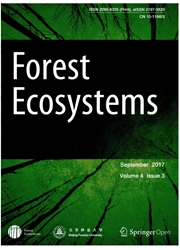

 中文摘要:
中文摘要:
尽管在自然保护区有丰富的自然资源,贫穷是在包围自然保护区的社区的社会经济的一个普通特征。从林地的收入仍然是为生活在自然保护区附近的居民的主要来源。输入和产量的结构,即生产率,在林地,在自然保护区的部门与一储备相当不同到另外一个。生产率能被数据包封分析(DEA ) 方法由于 DEA 的特征测量。在自然保护区的生产率的提升是在区域改进生活条件的一个有效方法附近的自然保护区。因此,在湖南的一个典型国家自然保护区与在区域测量生产率然后分析影响它的生产率的因素的目的在这研究被选择。
 英文摘要:
英文摘要:
Although there are abundant natural resources in nature reserves, poverty is a common feature of the social economy in the communities surrounding nature reserves. Income from forestry is still the main source for residents living around nature reserves. The structure of inputs and outputs, i.e. productivity, in the forestry sector in nature reserves is quite different from one reserve to another. Productivity can be measured by Data Envelopment Analysis (DEA) methods owing to the characteristics of DEA. The promotion of productivity in nature reserve is an effective way to improve the living condition in areas neighboring nature reserves. Thus, one typical national nature reserve in Hunan is selected in this study with the intent to measure productivity in the area and then to analyze the factors affecting its productivity.
 同期刊论文项目
同期刊论文项目
 同项目期刊论文
同项目期刊论文
 期刊信息
期刊信息
